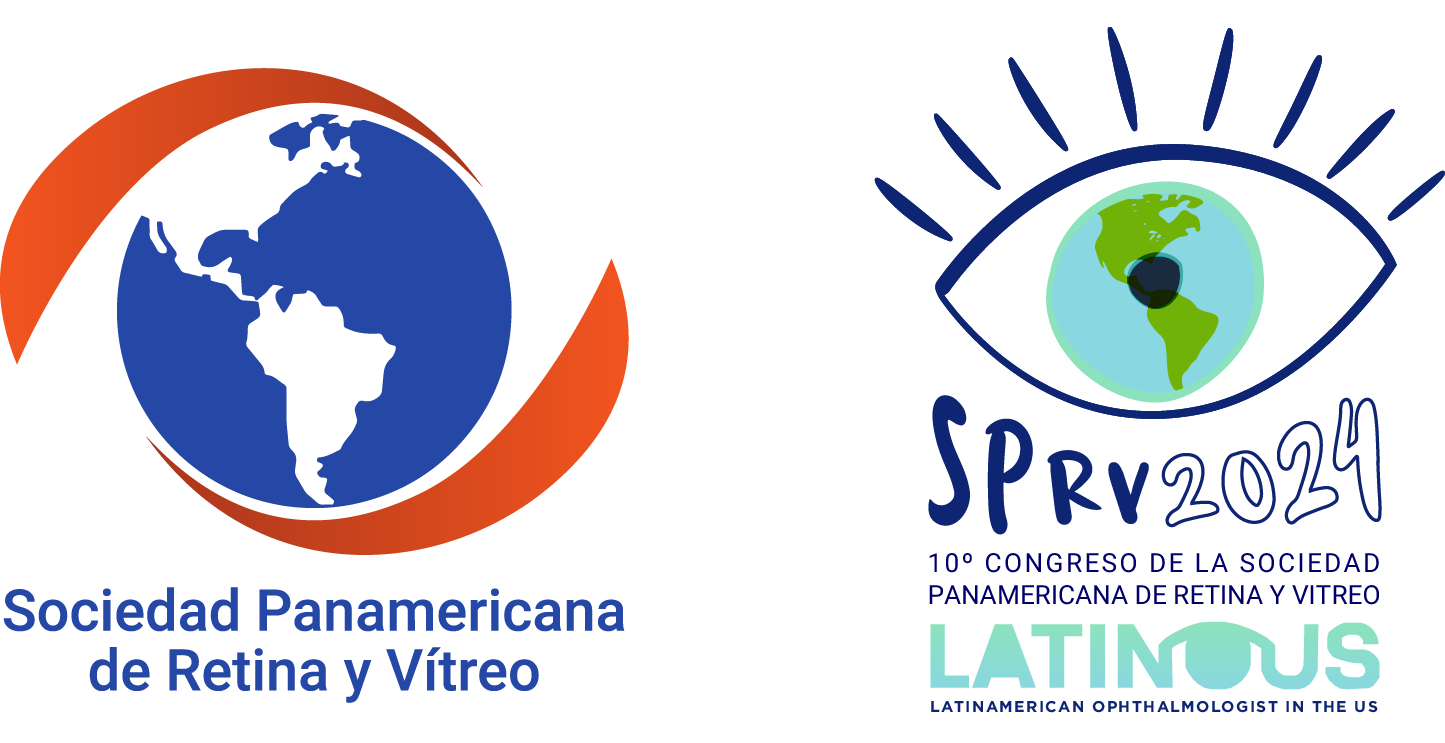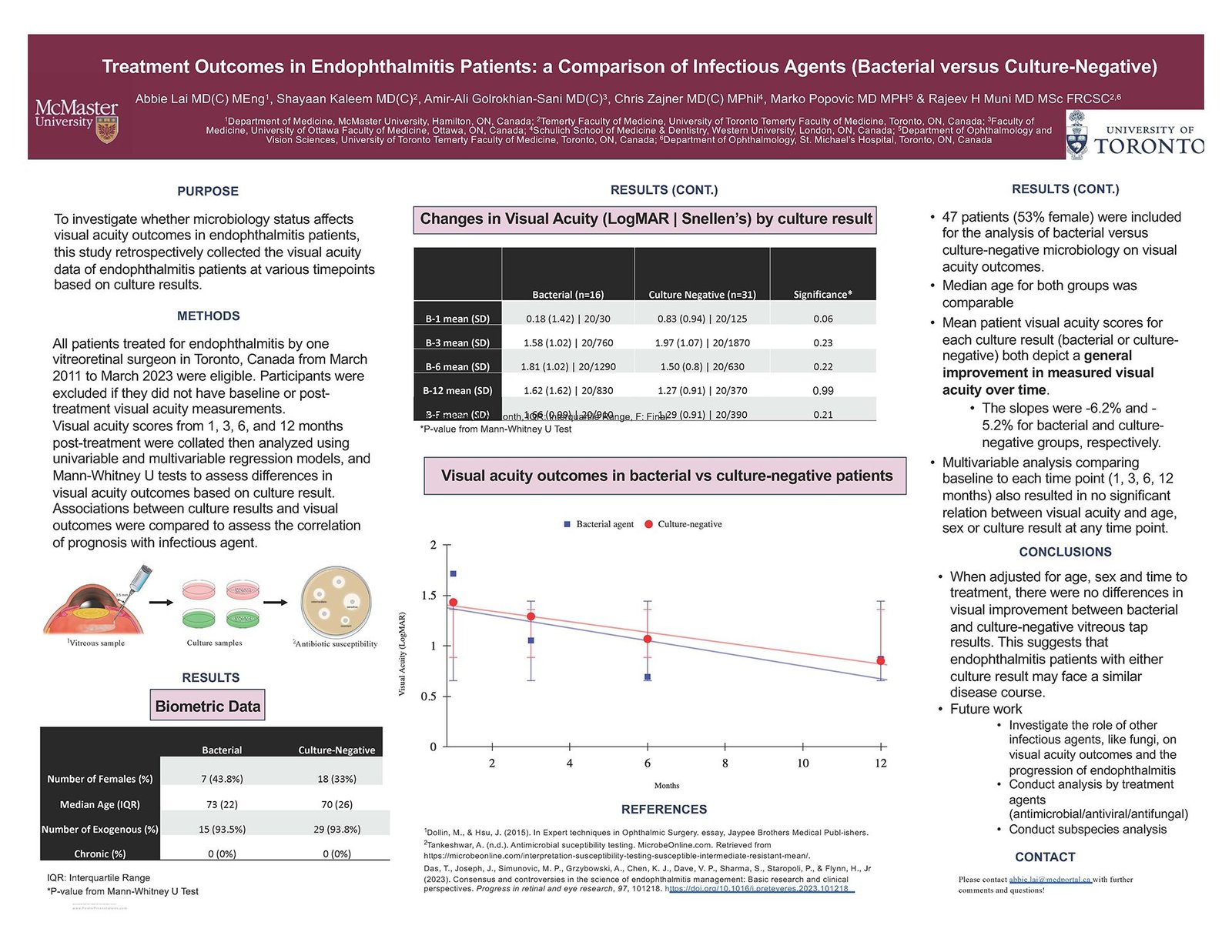SCIENTIFIC PAPER

Visual acuity outcomes based on microbiology findings in endophthalmitis
PRESENTING AUTHOR
Abbie Lai
-
Shayaan Kaleem,McMaster University, Michael G. DeGroote School of Medicine, Hamilton, Ontario, Canada University of Toronto, Temerty Faculty of Medicine, Toronto,...
-
Amir-Ali Golrokhian-Sani,McMaster University, Michael G. DeGroote School of Medicine, Hamilton, Ontario, Canada University of Toronto, Temerty Faculty of Medicine, Toronto,...
-
Chris Zajner,McMaster University, Michael G. DeGroote School of Medicine, Hamilton, Ontario, Canada University of Toronto, Temerty Faculty of Medicine, Toronto,...
-
Marko M. Popovic,McMaster University, Michael G. DeGroote School of Medicine, Hamilton, Ontario, Canada University of Toronto, Temerty Faculty of Medicine, Toronto,...
-
Rajeev H. Muni,McMaster University, Michael G. DeGroote School of Medicine, Hamilton, Ontario, Canada University of Toronto, Temerty Faculty of Medicine, Toronto,...
-
Purpose:
Endophthalmitis can be caused by numerous infectious etiologies, but differences in visual acuity outcomes between etiological agents have not been extensively compared. This retrospective study assessed visual acuity outcomes in patients with endophthalmitis based on microbiology results.
-
Methods:
The data were collected from the medical records of a vitreoretinal surgeon in Toronto from March 2011 to March 2023. Data from adult individuals with infectious endophthalmitis were extracted. Patients were categorized based on their microbiology report as having either bacterial or culture-negative microbiology. Univariable and multivariable linear and logistic regression were conducted to visual acuity outcomes after endophthalmitis treatment for based on microbiology, adjusting for age and sex. Statistical analyses were carried out in Microsoft Excel.
-
Results:
46 patients with infectious endophthalmitis were included. There was a more negative linear association between mean visual acuity and bacterial cultures (R-squared = 0.606, p = 0.008) compared to the association between mean visual acuity and culture-negative samples (R-squared = 0.645, p = 0.003). This suggests that mean VA improved more quickly in the bacterial group than the culture-negative group. However, on multivariable logistic regression, there was no significant difference in visual improvement between samples with bacterial culture or culture-negative from baseline to 1-month post-treatment (p = 0.11) and baseline to 12 months post-treatment (p = 0.57).
-
Conclusions:
This linear and multivariable analysis found no significant difference in VA recovery between endophthalmitis patients with bacterial or culture-negative infections. Further large clinical trials would be helpful in further exploring the association between culture results with subanalysis by microorganism.
The authors have no financial interests in any material discussed in this article. There are no conflicts of interest to disclose.












